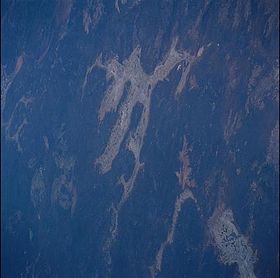Lake Barlee
| Lake Barlee | |
|---|---|

Satellite image
|
|
|
Location in Western Australia
|
|
| Location | Western Australia |
| Coordinates | 29°9′20″S 119°30′50″E / 29.15556°S 119.51389°ECoordinates: 29°9′20″S 119°30′50″E / 29.15556°S 119.51389°E |
| Lake type | Intermittent salt lake |
| Primary outflows | evaporation |
| Catchment area | 17,900 km2 (6,900 sq mi) |
| Basin countries | Australia |
| Max. length | 80 km (50 mi) |
| Max. width | 100 km (62 mi) |
| Surface area | 1,980 km2 (760 sq mi) |
Lake Barlee is an intermittent salt lake and with an area of 1,980 square kilometres (764 sq mi), is the second largest lake in Western Australia.
It is 65 kilometres (40 mi) southeast of Youanmi and 160 kilometres (99 mi) north of Bullfinch, on the border between the shires of Sandstone and Menzies. Lake Barlee is more than 100 kilometres (62 mi) from west to east, and about 80 kilometres (50 mi) from north to south.
The lake is usually dry. It fills about once every ten years on average, after which the water persists for a little less than a year. When it is inundated it becomes an important breeding site for waterbirds.
Lake Barlee was first encountered by John Forrest on 18 May 1869. Forrest's party, which was searching for the lost explorer Ludwig Leichhardt, became bogged while trying to cross the salt lake. After extracting their horses, they skirted the lake for nearly a week. On 25 May, Forrest climbed Yeedie Hill and saw the great extent of the lake.
Forrest named the lake after Frederick Barlee, the Colonial Secretary of Western Australia.
Lake Barlee, along with some small satellite lakes, was identified by BirdLife International as a 1,937-square-kilometre (748 sq mi) Important Bird Area (IBA). It supported one of the largest recorded breeding events of the banded stilt, with 179,000 nests counted. Other waterbirds known to breed at the lake include the black swan, Australian shelduck, pink-eared duck, white-headed stilt and red-capped plover.
...
Wikipedia

